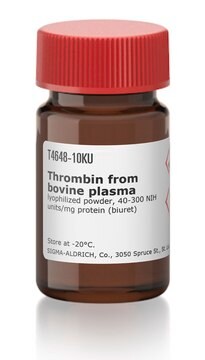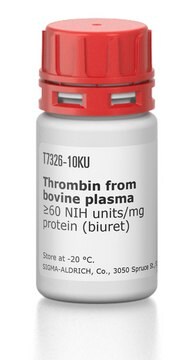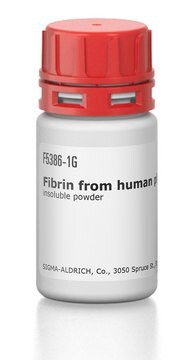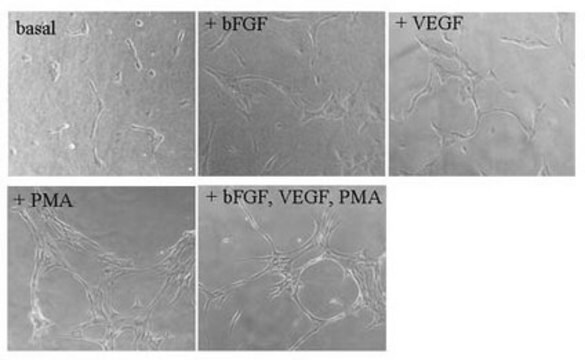F8630
Fibrinogen from bovine plasma
Type I-S, 65-85% protein (≥75% of protein is clottable)
Synonym(s):
Factor I
About This Item
Recommended Products
biological source
bovine plasma
type
Type I-S
form
powder
mol wt
α-chain 63.5 kDa
β-chain 56 kDa
γ chain 47 kDa (about 4% carbohydrate content)
soluble dimer 340 kDa
concentration
65-85% (biuret)
technique(s)
cell culture | mammalian: suitable
storage temp.
−20°C
Gene Information
cow ... FGA(522039) , FGB(510522) , FGG(280792)
Looking for similar products? Visit Product Comparison Guide
Application
Biochem/physiol Actions
Physical form
Reconstitution
Analysis Note
Storage Class Code
11 - Combustible Solids
WGK
WGK 3
Flash Point(F)
Not applicable
Flash Point(C)
Not applicable
Personal Protective Equipment
Certificates of Analysis (COA)
Search for Certificates of Analysis (COA) by entering the products Lot/Batch Number. Lot and Batch Numbers can be found on a product’s label following the words ‘Lot’ or ‘Batch’.
Already Own This Product?
Find documentation for the products that you have recently purchased in the Document Library.
Customers Also Viewed
Our team of scientists has experience in all areas of research including Life Science, Material Science, Chemical Synthesis, Chromatography, Analytical and many others.
Contact Technical Service







